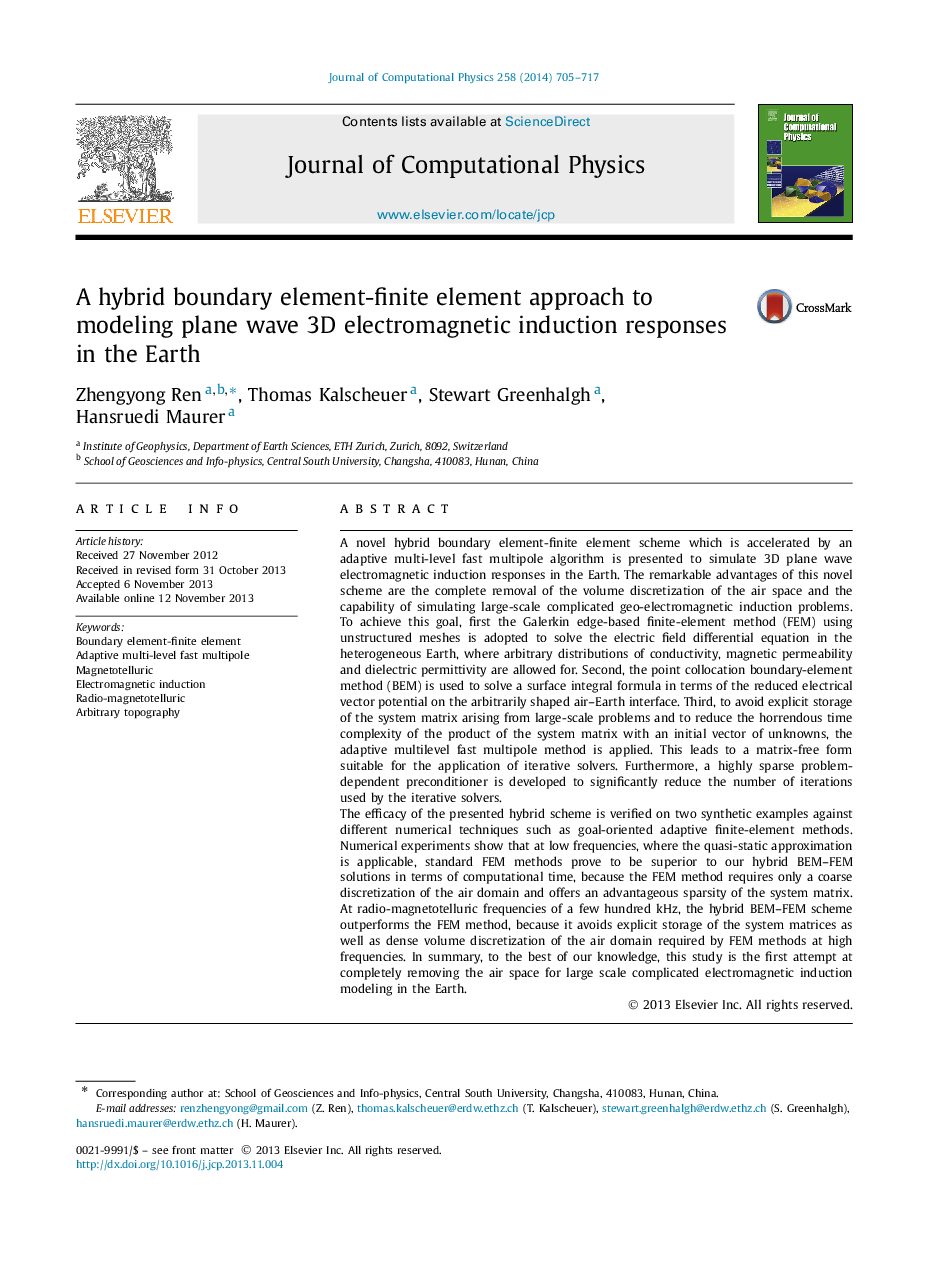| Article ID | Journal | Published Year | Pages | File Type |
|---|---|---|---|---|
| 6933202 | Journal of Computational Physics | 2014 | 13 Pages |
Abstract
The efficacy of the presented hybrid scheme is verified on two synthetic examples against different numerical techniques such as goal-oriented adaptive finite-element methods. Numerical experiments show that at low frequencies, where the quasi-static approximation is applicable, standard FEM methods prove to be superior to our hybrid BEM-FEM solutions in terms of computational time, because the FEM method requires only a coarse discretization of the air domain and offers an advantageous sparsity of the system matrix. At radio-magnetotelluric frequencies of a few hundred kHz, the hybrid BEM-FEM scheme outperforms the FEM method, because it avoids explicit storage of the system matrices as well as dense volume discretization of the air domain required by FEM methods at high frequencies. In summary, to the best of our knowledge, this study is the first attempt at completely removing the air space for large scale complicated electromagnetic induction modeling in the Earth.
Related Topics
Physical Sciences and Engineering
Computer Science
Computer Science Applications
Authors
Zhengyong Ren, Thomas Kalscheuer, Stewart Greenhalgh, Hansruedi Maurer,
